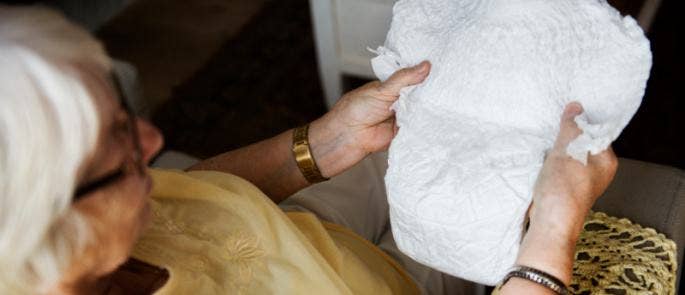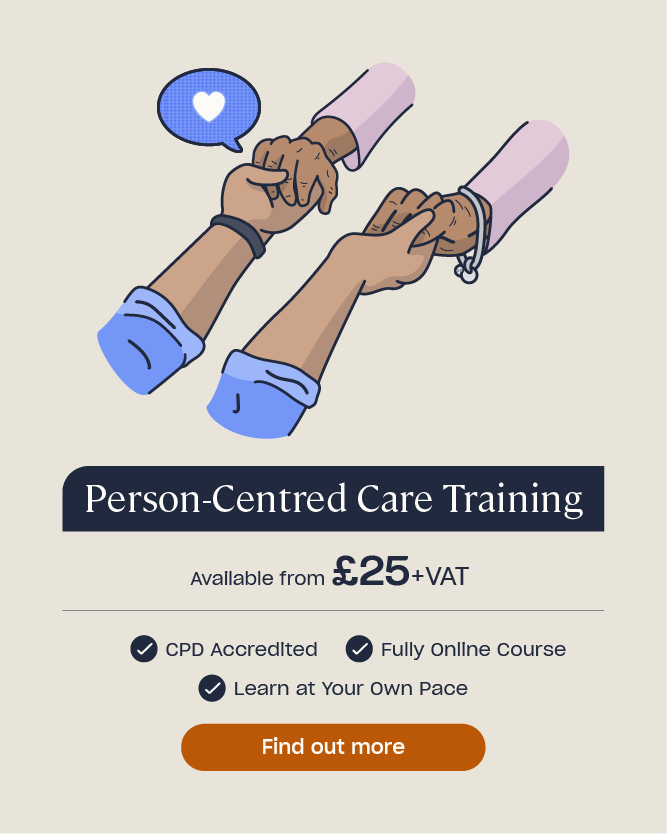Continence Care in Health and Social Care
Continence care is something many health and social care workers will be familiar with, particularly those that work with the elderly. Incontinence of both the bladder and bowels tends to be much more common in older age, therefore, those working in residential and nursing homes will be most likely to provide support with this on a daily basis.
In this article we will look at what continence care is and why it is important in health and social care. We will also provide guidance on how to provide the appropriate support and management to those experiencing continence issues.
What is Continence Care?
Continence refers to a person’s ability to control their bowel and bladder movements. Those experiencing incontinence lose this control, leading to involuntary urination or defecation. This can happen for many reasons, such as physical injuries, medical conditions, advanced age or dementia. The type of incontinence experienced and the cause behind it can vary, as can the way it is treated and/or managed.
Continence care refers to all areas of support required to meet the needs of the person experiencing incontinence. It covers assessment, physical support, advice and access to appropriate equipment and supplies, such as incontinence pads, catheters, stoma bags, convenes and commodes. The very nature of being incontinent can affect other areas of a person’s wellbeing, both mental and physical, and care plans should always consider all of these factors.
Continence care and management will look different for everyone, for example, one person’s care may involve the management of a urinary catheter, others may require urgent access to a toilet or the use of incontinence pads. Effective management in all cases can help reduce the risk of infections and other negative health consequences. Each case must be assessed by an appropriate professional and management of the condition must be approached in a person-centred way, maintaining respect and dignity at all times.

Why is Continence Care Important in Residential and Nursing Homes?
Busy, communal environments, such as hospitals and care homes, are incredibly important places for ensuring high-quality continence care is provided, as many people there will be at-risk individuals.
In care homes, many service users are advanced in age, have reduced mobility, are less independent and often suffer from ailing health and cognitive impairment. All of these factors increase the likelihood of requiring some degree of continence care and an increase in dependency on care staff.
Incontinence can impact a person’s level of self-esteem, confidence, independence and general wellbeing, regardless of their age or circumstance. Therefore, providing the highest level of continence care is essential to ensuring each individual has a personalised and dignified experience.
As many of those working in the health and social care sector will attest, there are numerous pressures on the service, including a lack of resources, such as time, staff and training. These contribute to an increasing number of care homes and hospitals falling into the trap of a ‘pad culture’, particularly amongst those with dementia. This involves the overuse and inappropriate use of incontinence pads on those who do not require them.

Some of the reasons behind pad culture include:
- Wrongly assuming anyone with dementia is incontinent.
- A lack of staff awareness on continence assessments and the importance of following care plans.
- Insufficient staff or time available to ensure individuals can be regularly assisted to use the toilet.
- Viewing the use of pads as a ‘back-up’.
- Having a lack of equipment in place, such as commodes, bed pans or urine bottles.
- Using them as an alternative or as an addition to the recommended management plan. For example, using a pad instead of, or as well as, a convene as staff find it easier.
There are a great many reasons why pad culture has become so prevalent, but it is important to remember the negative implications of using them inappropriately. These can include:
- Losing any toileting independence that the individual had.
- A loss of dignity, wellbeing and self-esteem.
- An increased dependence on staff.
- Additional risk of skin breakdown and other related health issues that can come from urine and faecal exposure.

The quality of continence care provided to those in care homes has a direct impact on so many areas of their life and its quality. It is vital that all staff understand the consequences of poor practice, and the resources and management methods available to ensure a dignified approach is maintained at all times.
One prevalent consequence of poor management is an increase in dehydration. Combating dehydration in health and social care is an ongoing challenge. Often, service users with continence issues will purposefully drink less in an attempt to avoid ‘accidents’ as not only is this distressing for them, but many feel they are being a burden on staff by needing frequent toileting assistance. Staff should always ensure that those in their care feel supported and valued.
Want to Learn More?
We have a range of Health and Social Care Courses available for those wanting to further their knowledge. Many of the topics available, such as Person-Centred Care and Dignity in Care, highlight the core values that underpin high-quality care.
Continence Care Guidelines
Each care organisation should have robust policies and procedures in place regarding continence care and all staff providing that care should be fully trained and competent. It is important that each individual care plan details not only their care needs and requirements for any continence care required, but also their preferences. Care should be person-centred and individuals should be empowered to make their own choices regarding their own care wherever possible.
All staff should be aware of the care standards they must work in line with and how it should be achieved. We have mentioned the importance of dignity and respect throughout this article as sadly there are still cases where undignified practice still occurs. A common example is a lack of privacy, leaving doors or curtains open whilst someone is toileting or receiving care, having loud discussions during care or allowing someone’s body to be exposed during care tasks.

The Health and Social Care Act 2008 (Regulated Activities) 2014 sets out best practice within its guidance, that should be followed by all organisations and staff. Some of the key regulations include:
- Regulation 9 – Person-centred Care: Care and treatment provided must be appropriate, meet the needs of the service user and reflect their preferences.
- Regulation 10 – Dignity and Respect: Service users must be treated with dignity and respect.
- Regulation 12 – Safe Care and Treatment: Care and treatment must be provided in a safe way.
- Regulation 18 – Staffing: Staff employed in the provision of a regulated activity must receive appropriate support and training as necessary to ensure safe practice.
All care staff have a duty of care to those they support, and that can mean reaching out to other professionals to ensure they are getting the most effective and appropriate care they need. If you have any concerns over a person’s continence, it is good practice to involve a continence specialist, depending on the setting, this may require the GP to be the first point of contact initially, with ongoing support provided by a community continence nurse.
How to Manage Incontinence in the Elderly
Regardless of whether someone comes into your care with an incontinence diagnosis or whether it develops at a later point, they should always be treated with dignity and discretion. It can be an embarrassing and uncomfortable experience no matter how long a person has been dealing with it and their comfort and wellbeing should remain a priority at all times.
Incontinence can be a difficult topic to discuss for some people and many feel ashamed and try to hide it. Effective communication between care staff and service users can help to build trust and support empowerment, making those experiencing the condition much more likely to discuss their wants and needs. Only by gaining this level of understanding can a person-centred care plan be put in place and their incontinence managed appropriately.

With this in mind, it can often be beneficial to have a ‘continence champion’ in place within a care home. This helps service users to not only have a point of contact, but helps give them confidence that their needs will be understood. The champion can provide advice and support to other members of staff and be a direct link to the community nursing specialist. This can make accessing advice, support and appropriate aids a more efficient process.
There can be lots of elements that make up a successful continence management plan and understanding the person at its centre is key. To gather further understanding of their bladder and bowel habits, it may be necessary to keep input and output records. This means recording how much a person ate and drank and how much urine or stool they passed. It can provide useful information when it comes to how incontinence is managed.
Other observations that can help tailor a care plan, is to note patterns. For example, does the individual always open their bowels within 30 minutes of eating? Do you find a person has passed large amounts of urine at each pad change? Understanding this can help to ensure they receive the care and support they require, at the right time. This helps to avoid over exposure to bodily fluids and reduces the indignity of ‘accidents’ or having to remain soiled longer than necessary.
Finally, it should be noted that managing continence care in those with dementia can be complex and challenging at times. However, regardless of their diagnosis or their capacity to express themselves, their dignity should be upheld and the continence care they receive should be as person-centred, discreet and respectful as those without the condition. Their level of continence should never be determined without an assessment, nor should it be based solely on their diagnosis.
Continence care in health and social care is incredibly common and one that makes a huge difference to the quality of life people experience. Everyone who works in the sector has a responsibility to ensure high-quality, person-centred care is delivered at all times and making sure appropriate assessments and care plans are put in place and followed is one such way to achieve this. Continence care, as with all care, should be appropriate, dignified and respectful at all times.
Further Resources:
- Person-Centred Care Training
- Ensuring Human Dignity and Respect in Nursing: A Checklist
- 9 Ways to Help Promote Dignity in Your Care Home
- What is Skills for Care?
- Urinary Tract Infections in the Elderly: A Guide for Healthcare Professionals
- How to Promote Oral Health Care in Care Homes







